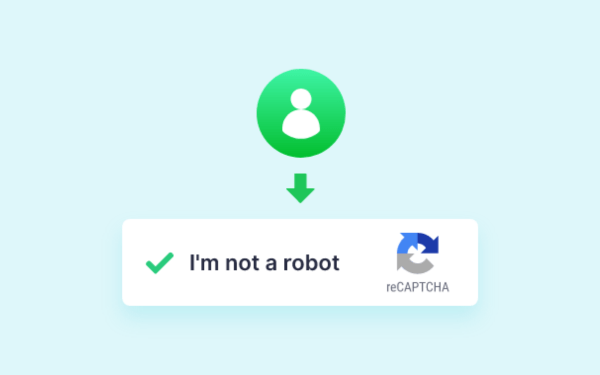Trong guồng quay công việc hàng ngày, chúng ta dành hàng giờ để soạn thảo…
What is Cloud Scalability? Compare cloud scalability and cloud elasticity
In the process of using server services on the Cloud, businesses often need to increase or decrease system resources to meet requirements from campaigns while still ensuring cost optimization. Cloud Scalability is a feature businesses need to pay attention to.
What is Cloud Scalability?
Cloud scalability (cloud scalability) is the concept of increasing or decreasing system resources to flexibly meet emerging needs such as running campaigns or processing a large amount of suddenly increased data... 
Cloud scalability is one of the outstanding features of Cloud computing services, thanks to the ability to quickly and easily expand, helping business systems have little or no interruption in cases of increased connection processing requirements. or unusual traffic. Compared to cloud scalability, scaling on-premises infrastructure can take weeks and months and is very costly.
Benefits of Cloud Scalability
Some key benefits of Cloud Scalability include the following:
- Ensuring system flexibility and stability: The most obvious benefit of Cloud Scalability is to ensure the flexibility of Cloud servers for businesses when sudden increases occur. With the ability to respond quickly, Cloud Scalability helps businesses minimize service interruptions or stops when systems generate requests that exceed normal levels, thereby ensuring system operational stability. .
- Easy to manage operations: Managing the installation of additional virtual machines immediately with Cloud Scalability is usually done quite easily by administrators with a few simple operations on the system. Thereby saving the IT team's time and resources compared to managing on a physical server.
- Cost savings: Compared to purchasing physical server infrastructure and maintenance, using cloud services with flexible scaling capabilities helps businesses save significant costs, you only need to pay the service fee to the provider. Cloud level according to the level you use.
In what situations is Cloud Scalability used:
- When running Sales/Marketing campaigns:
Normally when businesses run seasonal promotional sales programs, the system will generate a very large amount of traffic compared to normal and then gradually decrease when the promotional event ends. At this time, to ensure that the system can still meet customer access speeds, Cloud Scalability will help you quickly expand to meet immediate requirements from the system without having to process or purchase additional external resources. outside, as well as returning to normal levels after the event, thereby avoiding waste while still ensuring the stability and flexibility of the system.
- When performing analysis of large amounts of data:
Cloud Scalability còn có tác dụng mở rộng tài nguyên như dung lượng bộ xử lý hay bộ nhớ trong khi phải xử lý các tác vụ vượt mức thông thường, chẳng hạn như xử lý một lượng lớn dữ liệu phức tạp hoặc các tác vụ AI & Machine Learning.
How Cloud Scalability works
 The Cloud Scalability feature usually has 2 types of installation:
The Cloud Scalability feature usually has 2 types of installation:
Manual Scaling (Manual Scaling)
- Manual Scaling is a form of manually allocating the number and type of resources
- Advantages and disadvantages:
- Advantage: Manual Scaling gives administrators more control and flexibility over the resources allocated to applications and services, by allowing decisions on when and how much to scale up or down. Manual Scaling is therefore quite useful for predictable or planned changes, such as seasonal peak campaigns, promotional campaigns or during maintenance periods.
- Defect: However, Manual Scaling also has some disadvantages, such as requiring more human intervention and supervision, consuming time resources as well as increasing the risk of errors, not ensuring automation and flexibility.
AutoScaling (Automatic Scaling)
- Auto Scaling is a form of automatically adding or removing resources based on predefined metrics and policies on the Cloud
- Advantages and disadvantages:
- Advantage: Auto Scaling helps improve the availability, scalability, and resiliency of a system's applications and services by dynamically scaling resources to match demand. Thereby helping to optimize the cost and performance of Cloud infrastructure, businesses will avoid the situation of over- or under-provisioning of resources.
- Defect: However, an obvious disadvantage of Auto Scaling is that due to pre-setup, choosing the appropriate metrics and thresholds to trigger Scaling operations must be very precise. Besides, latency and consistency issues in Scaling events also need to be taken care of
There are several types of Cloud Scalability
Businesses will have many options to install Cloud Scalability solutions through Public Cloud, Private cloud or Hybrid Cloud types
There are two basic types of scalability in cloud computing: Vertical Scaling and Horizontal Scaling
- Vertical Scaling (Vertical Scaling) also known as “scaling up" or "scaling down", with this type of Scaling you add or remove resources to upgrade RAM and increase the server's CPU processor power. Typically this means scaling is limited based on the scaled server capacity, scaling beyond this will often result in downtime.
- Horizontal Scaling (Horizontal Scaling) Also known as “scaling in” and “scaling out”, with this type of Scaling you will add more resources (such as VPS) to the system to distribute the workload across machines, thereby increasing performance and efficiency. storage capacity. Horizontal scaling is especially important for businesses that require highly available services and minimal downtime.
Compare cloud scalability and cloud elasticity
You may have heard about the two terms Cloud Scalability and Cloud Elasticity. They sound similar but these are two different concepts:
- Cloud Elasticity: Elasticity refers to a system's ability to dynamically increase or decrease in response to changes in workload demands, such as spikes in web traffic. Systems equipped with Cloud Elasticity will automatically adjust to suit needs in real time to ensure stable system operation.
- Cloud Scalability: System scalability, as described above, refers to the ability to increase or decrease system resources to meet different workload processing needs. Cloud Scalability allows for more stable, long-term growth in a pre-planned manner, while Cloud Elasticity deal with immediate changes.
- Chief Cloud Elasticity and Cloud Scalability are all important features for a system, but the priority of one over the other depends partly on whether your business has predictable or variable workloads. high variability.
How Cloud Scalability on Google Cloud works
Google Cloud Platform (GCP) is the most flexible and scalable cloud computing platform available today, which can help businesses meet the needs of a growing user base. Learn more about features Cloud Scalability Google Cloud
Above is a summary of all the information about Cloud Scalability, hopefully through this article you will have an overview and understand more about one of the most outstanding features of Cloud Computing - the driving force motivating millions of global businesses to convert to the Cloud.



